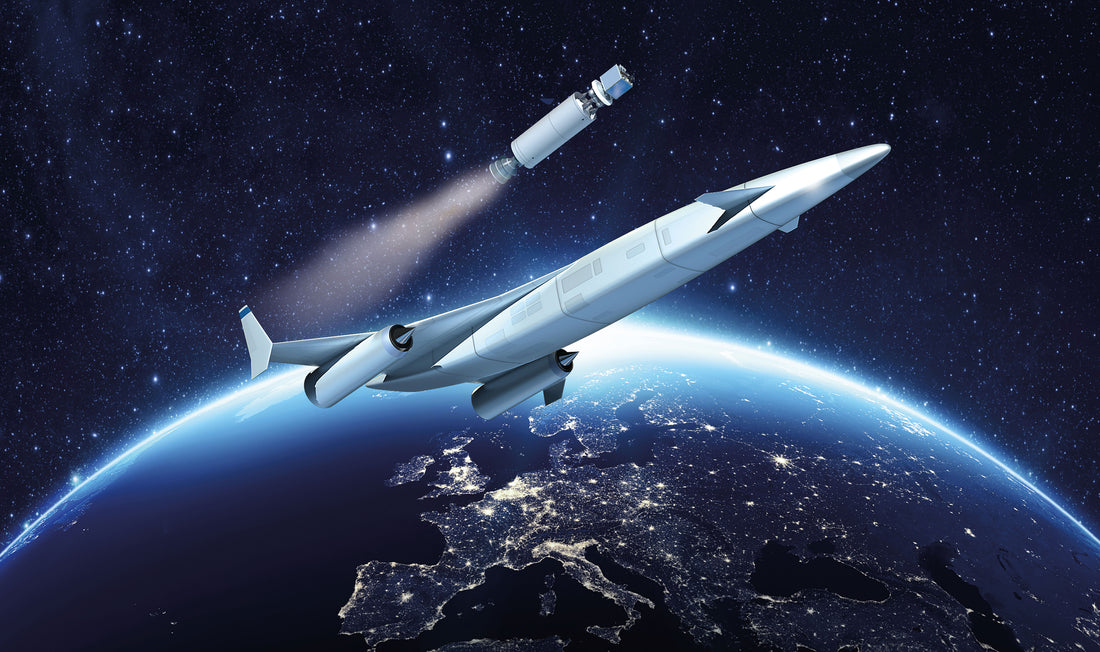
Fly to L.A. In Under Two Hours?
Share
SpaceX founder, Elon Musk, has announced that Earth-to Earth "spaceports" could be a reality just weeks after successfully launching a crewed rocket into space - a first for a private company.
The spaceports would be part of his grander vision to occupy mars with his prototype "Starship, however, he also claims these ports could send passengers around Earth at hypersonic speeds.
Hypersonic travel, just FYI, is flying through Earth's atmosphere beneath 90km at speeds above Mach 5, a speed so fast it splits molecules into atoms or ions.

Musk, prolific on Twitter as he is, took to the social media platform not as a tweet, but as a reply to a user.
Twitter user @SpaceXFleet saw that SpaceX was hiring and posted the link online, citing the juicy details that SpaceX's position would allow employees to "Work as part of a team of engineers and technicians to design and build an operational offshore rocket launch facility"
SpaceX is building floating, superheavy-class spaceports for Mars, moon & hypersonic travel around Earth https://t.co/zLJjz43hKw
— Elon Musk (@elonmusk) June 16, 2020
If you read our last article, you'd know that Elon Musk has eyed off Tasmanian shipbuilder Incat for potential subcontracting for "floating, superheavy-class spaceports"
While the plan for a sea-based spaceport isn't new, as Musk unveiled Starship with animations of it launching from a sea-based platform back in 2017.
However, in this particular tweet reply, Musk let slip some more details, specifically "building floating, superheavy-class spaceports for Mars, moon, & hypersonic travel around Earth"
When asked further about the news, Musk also added the spaceports themselves would likely be refurbished oil platforms in the Gulf of Mexico.
Specifically, Florida's space coast and South Texas, as Brownsville is where the hiring notice specifies.
Why there?

Because hypersonic travel is going to wake the neighbours (if you have any that is) and Musk's replies confirmed they must be "far enough away so as to not bother heavily populated areas".
He continued: "The launch and landing are not subtle, but you could get within a few miles of the spaceport in a boat,"
Musk is undoubtedly referring to Super Heavy, the first stage engine that would launch Starship before coming back down much like how Falcon 9 and Falcon Heavy do now.
It also makes sense location-wise as Starship itself is being routinely tested there.
When asked about hypersonic flights on Earth, he replied "there will be many test flights before commercial passengers are carried" and in reality, they won't begin for a few years at least.
Hypersonic speeds are clocked at about 6100km/h plus, meaning the 12,000 kilometres trip between Sydney and Los Angeles could be done in as little as two hours.
Fast enough to have you sucking on L.A. smog before the inflight movie finishes.
And making it the fastest commercial travel option on Earth, if it becomes a reality.

The only real competitor to Musk's plan is US company Boom Supersonic who announced in 2018 they will mass-produce 2,000 supersonic able planes to hit 500 destinations before 2025.
Company spokesman Jonathan Kaufman said "... anyone who travels in business class today can benefit from a meaningful speedup beginning in 2025. We believe that eventually supersonic flight will be available to everyone who flies,"
Boom Supersonic's planned planes are estimated to hit 2333km/h and would cut the time from Sydney to L.A. in half, at just under seven hours.
Still much slower than Musk's anticipated 2-hour flight.
Do you think hypersonic travel will be available within our lifetime?
Or even supersonic travel?
Let us know and keep spreading ARSE into the deep unknown...
#Space_Aus




